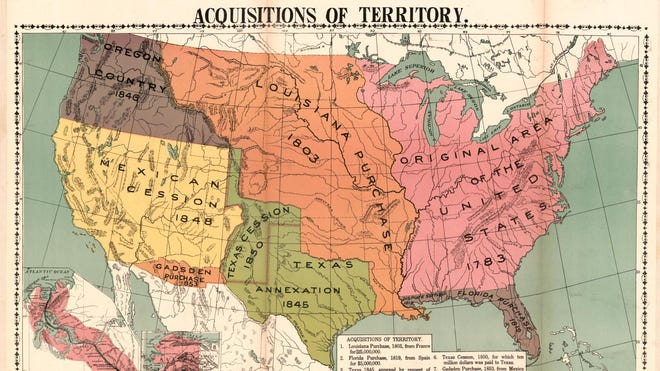President-elect Donald Trump on Sunday floated the idea that the United States should buy the Arctic island of Greenland because of its strategic importance to the United States and NATO.
“For the purposes of national security and freedom throughout the world, the United States of America feels that ownership and control of Greenland is an absolute necessity,” Trump wrote on Truth Social.
This statement was not well received by politicians in Greenland, as the large island has been part of Denmark for more than 600 years.
While Greenland is not currently for sale, the United States has purchased lands and territories from other countries in the past.
Louisiana Purchase
The Louisiana Purchase has been described as the greatest real estate transaction in history, according to the National Archives. In 1803, the United States paid France $15 million for the Louisiana Territory, approximately 828,000 square miles of land west of the Mississippi River. The acquired territory extended from the Mississippi River to the Rocky Mountains and from the Gulf of Mexico to the Canadian border. Thirteen states were carved out of the Louisiana Territory.

Florida
In 1819, Spain gave East Florida to the United States. Although they received no compensation, according to the State Department, the United States agreed to take responsibility for $5 million in damages to American citizens who rebelled against Spain.
Texas
During his term, US President James K. Polk on the most important territorial expansion of the United States after the Louisiana Purchase.
After Texas' successful war of independence against Mexico in 1836, Polk annexed Texas in 1845, and by 1846, the United States declared war on Mexico, leading to the Treaty of Guadalupe-Hidalgo.
Under the terms of the treaty in 1848, Mexico ceded approximately 525,000 square miles (55% of its prewar territory) in exchange for a lump sum of $15 million.

Gadsden Purchase
The United States purchased the Gadsden in 1853 to acquire an area of about 30,000 square miles in present-day southern Arizona and southwestern New Mexico in a treaty signed by the American ambassador to Mexico, James Gadsden. The purchase was the last large regional acquisition in the contiguous United States, according to the National Archives.
Alaska
The United States purchased Alaska, a territory from Russia, in 1867 for 586,412 square miles of land at $12 per square mile, less than 2 cents per acre, for a total of $7.2 million. Alaska did not gain its status until 1959, becoming the 49th state in the union.
Buy the Spanish-American War
The United States acquired Guam and Puerto Rico during the Spanish-American War of 1898, with the US victory forcing Spain to relinquish control of these territories through the Treaty of Paris; This treaty also gave the United States control over the Philippines, but the nation later gained full independence in 1946.
Hawaii
The Spanish-American War increased Hawaii's strategic value as a base for military operations in the Philippines, leading to its annexation in 1898. Hawaii became a US territory in 1900, and in 1959, it became the 50th state, where 90% of it lives. Of the islanders supported statehood.
American Samoa
The matai (local chiefs) of Tutuila, the largest island in American Samoa, gave the island to the United States in 1900. Manoa followed in 1904 and Suen Island joined the territory in 1925 by act of Congress. Authority was transferred to the Department of the Interior (DOI) in 1956.
Virgin Islands
Beginning in 1867, the United States made several attempts to expand its influence in the Caribbean and asked Denmark if it would be willing to sell the Danish West Indies, according to the State Department. In contrast to Greenland, the Danes were willing to sell the islands to the United States for $25 million in a 1917 treaty. After the transfer, the United States government changed the name of the territory to the United States Virgin Islands.
Reuters contributed to this story.
Victor Hagan is an Alabama election reporting fellow for the USA TODAY Network. He can be reached at vhagan@gannett.com or at X@TheVictorHagan. To support his work, subscribe to the advertiser.

